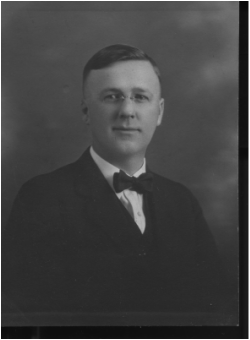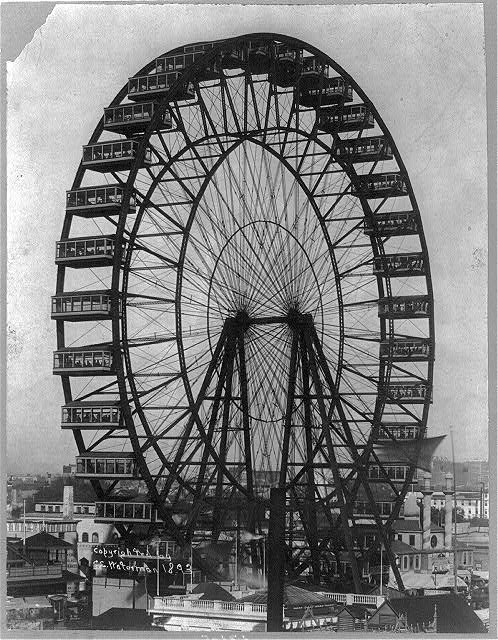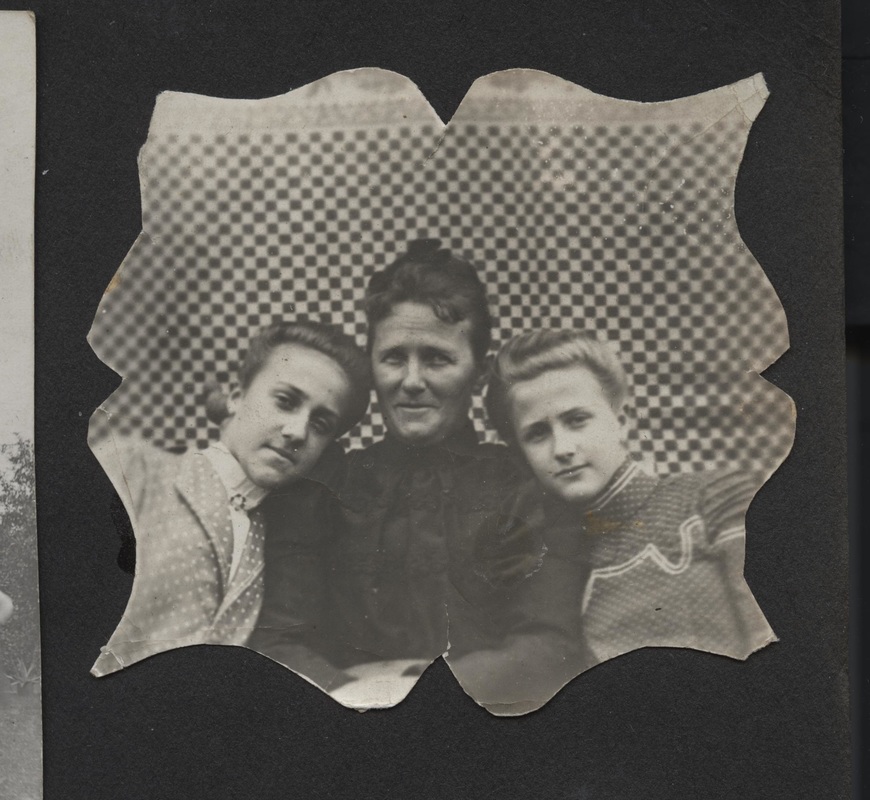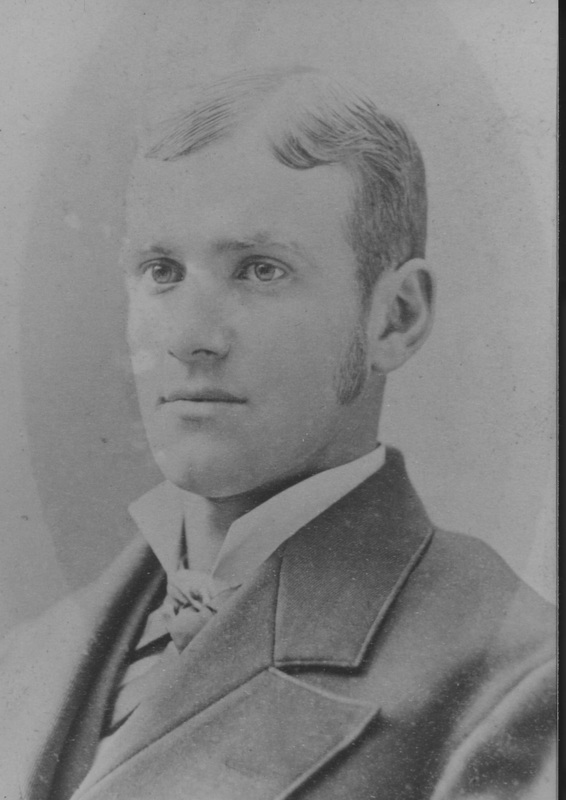|
 Irving Kircher Irving Kircher Readers may notice my name, Mary Kircher Roddy, and (correctly) infer that Kircher is my maiden name. For most of my adult life, I used Mary E. (for Elizabeth) Roddy as my “professional” name. I entered graduate school to earn a Master’s degree in accounting under my maiden name, married part-way into the program, and for my entire life as a Certified Public Accountant I’ve been known as Mary E Roddy. But as I began to work professionally as a genealogist, author, and speaker, putting the Kircher back in my name became important to me, part of my oh-not-so-secret hope that a researcher or relative might make a connection to that family name and “bag” me! I have often teased that if I had a bigger business card, I’d call myself Mary Kircher Springer Freuhauf Hartman Altoff Schoenemann Bradley Rugh Keppel Yearyan Fooselman Mechling Merkel Ahern Toumey Walsh Graham Keenan Brown Mansperger Shafer Raiser Long Gillotte McGrew McCrae Neusche Erhardt Hardy Green Gee Beauford Bruce Andrews Neville Drury Fields Devlin et al Roddy. But as another Mary once sang, “That’s going a bit too far don’t you think?”[1] Indubitably… so I’ll stick with the plain old Mary Kircher Roddy and hope for the best. Just this week my plan to get “bagged” by a relative bore fruit! A woman on facebook sent me a friend request – she’s a genealogist, saw the Kircher in my name and recognized it from her family research and reached out. Hopefully we’ll be able to connect our families. So in honor of my Kircher’s I’ll post another Kircher story today., the transcription of “The Kircher Family Visits Worlds Fair, Fall 1893”[2] by Irving Kircher.[3] It was not easy for Father[4] to leave his farm for a period of seven or eight days. There were many things that needed daily attention such as milking cows, feeding horses, cattle, pigs and chickens. However, Fall was the best time to go as many of the crops were already harvested and the weeds were well under control. Mother[5] was against the adventure but Charles[6] and Irving were all for it; the babies Helen and Stella[7] were too you to express an opinion. Father was eager to make the trip as he had two cousins living in Chicago, one Julius who was employed by a couple of Swift boys who had a slaughter house near his home,[8] the other cousin, Albert[9] who was a barber in the neighborhood of 5232 May St. Both of these cousins had visited in Webster and now was a good time to kill two birds with one stone – see the fair and visit relatives. Now it was time to make plans. Who shall we get to look after the chores and what will we do with the babies – Helen and Stella? Hiram Jennings, a Christian man and a lay preacher and part time farmer would be willing to help if he could find the time. John Wolf, Geo. Schremer, other neighbors, were experienced farmers who might be able to watch over the live stock. Lon Thayer and Cider ben were good fellows and had little to do. Lon had a cider mill which had not yet opened for the season, and Cider Ben never had a job, and father was afraid to place too much responsibility with him as we had a bull in the barn yard and the horses were treacherous, one would bit, another would crowd you in his stall, another would try to step on your toes – all of them were kickers. After much consideration Lon Thayer was chosen to take over ,and for his work he was to receive the milk he took away from the cows. Grandma and Grandpa Bowman[10] who lived over on the track offered to take care of the girls during our absence. We children all loved our grandparents and it was a great pleasure to visit them. The girls were delighted to vacation over there. Grandpa, a jolly old man was a blacksmith. He nailed shoes on horses and put metal tires on wagon wheels. Pa said he never saved any money because he spent so much on groceries. Grandpa loved roast beef and he was willing to pay 15 cents a pound for his meat – a good five pound roast would cost 75 cents and that was what kept him broke. Charles Jr.[11] was a big 14 year old boy and was thinking of entering High School. High School Prin[cipal] E. D. Webb told father it was a must. After a debate of an hour or so father finally consented to pay the enrollment tuition and allow Charles to start High School work after election day which usually came after Nov 1. We are now ready for the train ride to Chicago. Our baggage which was small and rolled in bundles was made ready, each carrying at least one bundle. It was morning when we boarded the R.W & O[12] limited to Rochester. The ride was pleasant and we arrived safely at Rochester some time before noon. The usual worries that go with travels were with us. Did we forget anything? No, nothing was left undone, but still mother couldn’t remember if she locked the kitchen door. “Where is the key if we locked the door,” said Charles Jr. After some hard thinking mother did rember of making a final stop at the little house in the back and on her return as she passed by the wood pile she overturned a large wood block and tucked the key under it. Father was a man who could find at least one thing to worry about at any moment. When will we get to Chicago? Will some one meet us, where will we go and what will we do, were some of the thoughts that flashed through his mind as we hurriedly entered the west bound NY Central coach. The train was off and w were whizzing along at 40 miles per hour. Tickets please, shouted the conductor. Father opens his money bag in search of the tickets. Fifty silver dollars could make a lot of trouble in a money bag, however two tickets did pop up and dad said there they are. Conductor – What, only 2 tickets for the four of you. How old are these boys? Pointing at me dad said he’s eleven. What about the other boy? He’s older. How old? 14 I think. Conductor’s reply – children under 12 go for free – over 12 must pay ½ fare. I don’t know what the outcome but there was an argument each time the conductor came along to take up tickets and call the name of the next station. A new conductor came on duty after a short time. Dad saw him coming down the aisle and shouted to Charles – make yourself look small, crouch down – it worked. There was confusion, noise, running and shouting as the train pulled up to the Grand Central station in Chicago. We hurried outside and enjoyed a breath of fresh air. Dad was right when he worried about what to do next when we arrived in Chicago. 5232 May Street that’s the number we are looking for. Cousin Julius lives there ant that’s where we’re going. We start looking for May street but only for a short time; father found it in less than 10 minutes. We were lucky and happy to know that we were so near our destination. But where is 5232? We shall walk and find it; it can’t be far away. One thing we didn’t know was the length of a city block. We walked a block or two and thought we were near our destination. A horse drawn street car passed us. We didn’t board it as we thought our journey was a short one. This was a mistake. It took us 3 hours of walking before we found 5232. The ride on the train meant more to me than the Exposition. The outstanding features at the Fair were the Ferris Wheel which took us up to a height of 100 feet or more. The view from the wheel was wonderful. The statues on the grounds and in the buildings always drew comments from the older people. The men thought the art specimens were nice and the women thought they were naughty. Our generation would have no comment.[13] Question – what did we take home with us? Answer – the satisfaction of a feeling that there was no place like home in Webster. Irving” Researcher’s notes:
Dear Reader - please scroll down for more pictures. I couldn't figure how to integrate into the text [1] “Supercalifragilisticexpialidocious” Robert B and Richard M Sherman, from the musical, Mary Poppins [2] The transcription in this blog post is of a photocopy of something written by Irving Kircher. I do not know anything about where the original is located or the circumstances under which it was written. There is no date written anywhere I can find on the pages. The penmanship in the document looks like that of an adult. The document was included in the papers in a file kept by my father labeled “Kircher Genealogy” [3] Irving Kircher, born 21 August 1882, was the second child of Charles Conrad Kircher and Frances Abelone Springer. His adult life was spent in LaCrosse, Wisconsin where he was a school principal [4] Charles Conrad Kircher, born 21 January 1852, Rochester, Monroe, New York [5] Frances Abelone Springer, born 13 February 1857 Liverpool, Onondaga, New York. Married Charles Conrad Kircher 12 March 1878. [6] Charles Jr. is my grandfather, Charles Arthur Kircher, son of Charles and Frances, born 25 April 1879 in Webster, Monroe, New York and died 8 March 1952 in Marin County, California. [7] Helen and Stella are the two daughters of Charles and Frances. Helen was born 8 March 1888 and Stella was born 18 November 1889. [8] I believe this is Julius Kircher, son of Julius Kircher and Sophia (last name unknown.) Julius Jr was born circa 1857 in Monroe County, New York, lived in Illinois from the mid-1880s to sometime in the 1910s, and died in Los Angeles, California 14 February 1922. Julius Kircher Sr., born circa 1824 in Prussia/Germany, died 16 August 1863, is the brother of Carl Conrad Friedrich Kircher, my great-great grandfather. [9] I believe this is Albert Kircher, also son of Julius and Sophia, born about 1857 or 1858 in Monroe County, New York. However, I find Albert Kircher, barber, appearing in the city directories in Elmira, Chemung, New York from about 1882 to 1897, so I am not clear about Irving’s assertion that Albert was living in the Chicago area. [10] Grandma Bowman refers to Louisa Caroline Hartman Springer Bowman, mother of Frances Abelone Springer. Grandma Bowman is Henry Bowman/Bauman, who married Louisa about 1875 after the death of her first husband, Johannes Springer 3 October 1867. [11] Charles Jr. is my grandfather, Charles Arthur Kircher, born 25 April 1879 in Webster, Monroe, New York and died 8 March 1952 in Marin County, California. [12] Rome, Watertown & Ogdensburg.Railroad [13] Editorial comment – seems the more things change, the more they stay the same…
2 Comments
Recently I had the opportunity to take a tour of the Pacific Northwest Railroad Archives in Burien (http://pnrarchive.org/) as part of the Historic Seattle “Digging Deeper” series of tours in various archives around Seattle. (http://historicseattle.org/blog). I have a number of railroading ancestors and collateral relatives and the tour made me want to write about one tragic tale of some of my Bradley trainmen. Today is the 87th anniversary of the events below.
My great grandfather, Patrick Bradley worked for the Northwestern Pacific Railroad, as did many of his relatives, including two nephews, George Francis and Paul Frederick Bradley, brothers who were employed by the NWP, George as an engineer and Paul as a conductor. On February 28, 1929, George Bradley was at the throttle of Engine 141, pulling a northbound passenger train. He received orders at Hopland directing him to pull onto the siding at Largo to let a southbound freight train pass. He likely even read those orders - when they were later found in his pocket, there was a smudge from a grease-stained leather glove on the corner as if he had unfolded the paper to read it.[1] But for some reason he ignored them. George ran the train right by the siding, and 400 yards north of the switch, collided headlong into Engine 184 pulling a train of cars full of timber. George had his head and shoulders out the window while he was rounding a curve in the road, and had no time to escape from the locomotive. He was killed instantly. His fireman, Don Mohn, jumped before the crash and escaped nearly uninjured.[2] Roy Landree, the fireman on the freight was killed instantly as well, as the timber from the cars immediately behind the locomotive shot forward like bullets from a machine gun.[3] The engineer of the freight, George Cunard, was injured and died a few days later in a San Francisco hospital.[4] Suffering minor cuts and bruises, Paul Bradley, conductor of the freight, helped remove the mangled remains of his brother, George, from the wreckage.[5] Much of the window frame had to be cut to extricate the body. (A picture of the wreck can be seen at http://tinyurl.com/jf6y77u) The Ukiah newspapers indicate that George was from Willits[6] and the Sausalito newspapers indicate he lived in Tiburon,[7] some 130 miles apart. I remember my father who was about six years old at the time of George’s passing, recounting his vivid memories of the funeral. It seems that George had a family at each end of his rail route. There was the first wife, Maye, at the north end and a second wife, Juanita, at the south end of the line. Dad recollected that Juanita was in the front pew of the church while George was laid out in front of the altar. Maye made her way to the front of the church, saw her husband in the coffin, shrieked, and collapsed to the floor. Dad said that eventually they went on with the funeral, but I don’t remember if both widows remained for the services. Another cousin, a daughter of George with Juanita who was almost 7 years old when her father died, remembered the sound of Maye’s clicking heels as she made her way way to the front of the church, and she recalled that Maye sat down in the front pew next to Juanita and proclaimed “I’m the real widow here.” I haven’t looked for a divorce record between George and Maye. There are a number of counties where they might have been divorced, and about a ten-year span between the birth of Maye’s second child and Juanita’s first. But it may be that there wasn’t ever a legal divorce. George, Maye and Juanita are long-gone and most of their stories buried with them. [1] Ukiah Republican Press, March 6, 1929, page 5 [2] Dispatch Democrat, March 2, 1929, page 1 [3] Ukiah Republican Press, March 6, 1929, page 1 [4] Ukiah Republican Press, March 6, 1929, page 5 [5] Dispatch Democrat, March 2, 1929, page 1 [6] ibid [7] Sausalito News, March 1, 1929, page 1 I have used newspapers extensively to learn more about my ancestors and fill out my family history, but if I could offer just one tip for newspaper research, it would have to be to read the entire paper. Oh, how that one tip could have saved me years and years of research.
I traveled to California to go to a library which held microfilm of my ancestors’ local newspaper, the Petaluma Courier. I found the obituary I was looking for, that of my great-great uncle, John Ahern. It was short and to the point: “AHERN – Near Oakland, June 18, 1896, John C., youngest son of J. Ahern of Petaluma and brother of James Ahern, a native of Sonoma county, aged 22 years.”[1] The obituary mentioned only his father and one brother, making no mention of another brother, Henry, and three sisters, Sarah, Belle, and my greatgrandmother, Mary Bradley . There was nothing to indicate how or exactly where he died. Of course I followed up with Alameda County to secure a death certificate for John, but came up empty. I’d theorized that maybe he was always sickly (his mother died in childbirth delivering him) or perhaps some sort of an accident. Fastforward a few years, again to another trip to California, this time to the Bancroft Library at the University of California in Berkeley, where I searched in the Oakland newspapers for an obituary for John. I didn’t find an obituary for John Ahern, but I found a surprise – an obituary for John Lockren. “LOCKREN - In this city, June 18, 1896, John C., beloved son of Ann Lockren and James Ahern, brother of Charles and Mary Lockren, Henry, James and Sarah Ahern, Mrs. Belle Green and Mary Bradley, a native of Sonoma, California, aged 22 years, 9 months and 17 days.”[2] This was my guy, but why was Ann Lockren listed as his mother? James Ahern only had one wife, Jane. And who were these additional siblings, Charles and Mary Lockren? I read additional issues of the Oakland and San Francisco papers trying to find more about the railroad accident which caused the death of John Ahern/Lockren. One brief article concerning the coroner’s inquest stated “It developed at the inquest that the correct name of the young man was John Ahren (sic), he having taken the name of his step-father.”[3] Over time, of course, I did my due diligence, getting the death certificate for his “mother,” Ann Lockren. No help there, but a clue came in the death certificate for Charles Augustus Lockren, which stated his parents were Michael Lockren and Anna Graham, both natives of Ireland.[4] Graham was the maiden name of Jane Ahern, John’s mother. She must be his aunt! If only, if only, if only I had read further in that original newspaper, the Petaluma Courier of June 24, 1896, I would have seen on the very next page a three-paragraph article all about the death of John Ahern, containing the significant tidbit, “He lived with his aunt and other relatives at Oakland.”[5] Of course the aunt wasn’t mentioned by name in the Courier, so I guess it was a good thing I found the Oakland newspaper as well, but I could have saved myself a lot of head scratching and a lot of time if I had read just one more page of the original newspaper! [1] The Petaluma Courier, June 24, 1896, page 2 [2] Oakland Enquirer June 19, 1896, page 4 [3] Oakland Enquirer June 20, 1896, page 5 [4] Death Certificate for Charles Augustus Lockren, 11 January 1911, California State Board of Health, County of Alameda. Certified copy in possession of author [5] The Petaluma Courier, June 24, 1896, page 2 |
AuthorMary Kircher Roddy is a genealogist, writer and lecturer, always looking for the story. Her blog is a combination of the stories she has found and the tools she used to find them. Archives
April 2021
Categories
All
|



